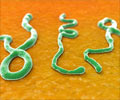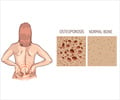Ebola, also known as Ebola hemorrhagic fever, is a rare and deadly viral disease. Humans and nonhuman primates such as monkeys, gorillas, and chimpanzees are most commonly affected by Ebola virus disease (1✔ ✔Trusted Source
Ebola virus disease
Go to source).
There are 5 different strains of the Ebola virus:
- Bundibugyo virus (BDBV)
- Taï Forest virus (TAFV)
- Sudan virus (SUDV)
- Ebola virus (EBOV, also known as Zaire Ebola virus)
- Reston virus (RESTV)
Except for the Reston virus, all the other four viruses cause Ebola virus disease in humans. Of these four, Ebola virus, which is the cause of
What is Ebola Virus Disease?
Go to source).























